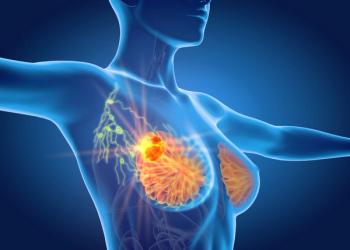
Oncology NEWS International
- Oncology NEWS International Vol 13 No 4
- Volume 13
- Issue 4
Anastrozole Advantage Greatest in ER+/PR- Pts: ATAC
SAN ANTONIO-A new analysis of the ATAC (Arimidex, Tamoxifen, Alone or in Combination) trial shows that the aromatase inhibitor anastrozole (Arimidex) was more effective in preventing relapses than tamoxifen in receptor-positive breast cancer patients (estrogen and/or progesterone positive [ER+ and/or PR+]), with the greatest effect seen in ER-positive/PR-negative (ER+/PR-) women, said Mitch Dowsett, PhD, professor of biochemical endocrinology, Royal Marsden Hospital, London, UK, on behalf of the ATAC Trialists’ Group.
SAN ANTONIOA new analysis of the ATAC (Arimidex, Tamoxifen, Alone or in Combination) trial shows that the aromatase inhibitor anastrozole (Arimidex) was more effective in preventing relapses than tamoxifen in receptor-positive breast cancer patients (estrogen and/or progesterone positive [ER+ and/or PR+]), with the greatest effect seen in ER-positive/PR-negative (ER+/PR-) women, said Mitch Dowsett, PhD, professor of biochemical endocrinology, Royal Marsden Hospital, London, UK, on behalf of the ATAC Trialists’ Group.
The study aim, Dr. Dowsett said at the 26th Annual San Antonio Breast Cancer Symposium (abstract 4), was to test the hypothesis that the relative benefit of anastrozole over tamoxifen (or the combination) in the ATAC trial differed according to PR status.
ATAC included 9,366 postmenopausal women with invasive breast cancer, recruited based on their suitability for hormone therapy: 84% were hormone-receptor positive (ER+ and/or PR+) with 8% receptor negative and 8% receptor status unknown. The patients were randomized 1:1:1 after completion of primary therapy to 5 years of tamoxifen (20 mg/d) or anastrozole (1 mg/d) with appropriate placebos or their combination. The primary endpoint was disease-free survival, with relapse-free survival as a secondary endpoint.
Relapse-Free Survival
In the new analysis, Dr. Dowsett said, "we are concentrating on the relapse-free survival data because that analysis reveals the impact of tumor biological features on the ability of the treatments to interact with the tumor."
Prior analysis of outcomes among hormone-receptor-positive women at 47 months had shown a highly significant (P = .007) 0.78 hazard ratio (22% reduction in breast cancer events) for anastrozole, compared with tamoxifen.
For this retrospective analysis, ER and PR status were known in 7,993 women (86% of the cohort). Most patients (71%) were ER+/PR+, with 17% ER+/PR-, 3% ER-/PR+, and 9% ER-/PR-.
Among the ER+/PR+ women, the hazard ratio for reduction in breast cancer events for anastrozole vs tamoxifen was 0.82 (P = .091). Outcomes for tamoxifen vs tamoxifen plus anastrozole were nearly identical. For ER-/PR+ patients, the hazard ratio was 0.79 in favor of anastrozole. For ER+/PR- women, however, the hazard ratio was significantly halved to 0.48 in women receiving anastrozole, compared with tamoxifen (P < .001).
Presenting Forest plots, Dr. Dowsett pointed out that, "for all three receptor-positive subgroups, the point estimate was to the left, suggesting a better performance for anastrozole than for tamoxifen, with no differences in the ER-/PR- group." When adjustments were made for baseline nodal status, tumor size and grade, and use of adjuvant chemotherapy, the hazard ratio for anastrozole vs tamoxifen in ER+ women was 0.80 in those who were also PR+ and 0.48 in those who were PR-.
Noting the greater efficacy of anastrozole in ER+ women, and the halving of relapses in ER+/PR- women, Dr. Dowsett concluded that, "these data generate the hypothesis that aromatase inhibitors may have greater efficacy relative to tamoxifen in patients with ER+/PR- tumors than in those with ER+/PR+ tumors." He added that before these findings affect treatment selection, they should be confirmed in other adjuvant trials of aromatase inhibitors.
Articles in this issue
over 21 years ago
Tam Not Linked to High-Risk Endometrial Caover 21 years ago
No Detriments From Lumpectomy/RT in BRCA 1/2 Carriersover 21 years ago
Second-Line Imatinib Produces CCRs in CML PatientsNewsletter
Stay up to date on recent advances in the multidisciplinary approach to cancer.

















































































